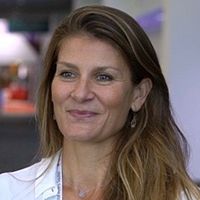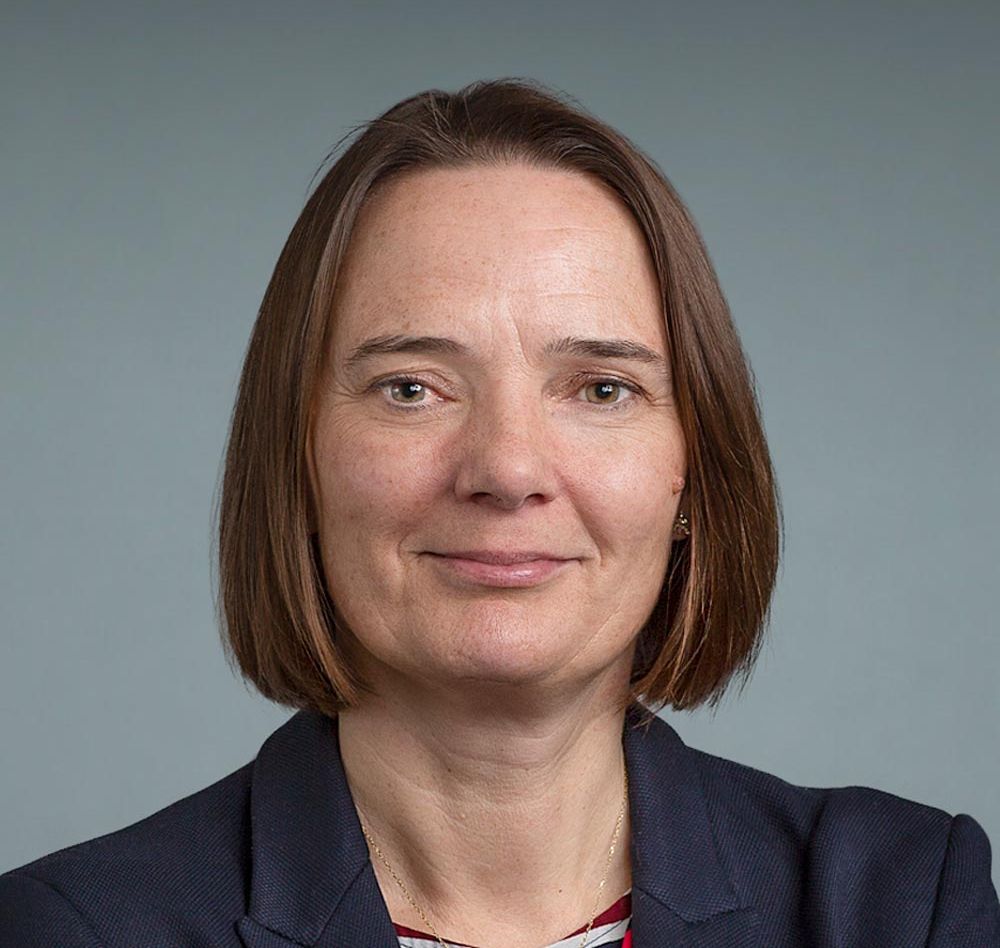- Center on Health Equity & Access
- Clinical
- Health Care Cost
- Health Care Delivery
- Insurance
- Policy
- Technology
- Value-Based Care
Reaching Consensus on Defining, Treating High-Risk Myeloma
A new consensus definition for high-risk myeloma patients and promising results from trials dedicated to their care may offer a "paradigm shift" in treatment, experts say at the International Myeloma Society 21st Annual Meeting & Exposition.
Despite the advances in treating multiple myeloma, some patients relapse early even when given the latest triplet and quadruplet combination therapies and maintenance following a stem cell transplant. At the International Myeloma Society 21st Annual Meeting & Exposition Thursday, experts led by Simon Harrison, MBBS, MRCP, FRCPath, FRACP, PhD, of Peter MacCallum Cancer Center, Melboure, Australia; and Faith Davies, MD, director of the Center for Blood Cancers, NYU Langone, gathered to address the needs of the 20% of patients diagnosed with multiple myeloma who will not survive 3 years.1
Jill Corre, PharmD, PhD | Image credit: COMy Congress

IMS 2024, taking place in Rio de Janiero, Brazil, concludes Saturday.
Much of the past 2 years has been spent agreeing on what constitutes high risk, based on patients’ genomic features. Jill Corre, PharmD, PhD, professor of Hematology Laboratory of the University Toulouse Hospital, outlined the multinational process that led to the consensus definition on high-risk cytogenetic features, based on the Second Revision of the International Staging System (R2-ISS).2
The consensus was achieved at a July 2023 workshop, completed in early 2024, and awaits publication. However, both Corre and, later, session cochair Davies presented tables outlining the IMS-International Myeloma Working Group definition in multiple myeloma. Patients must have 1 of the following:
- Del(17p) in ≥ 20% sorted plasma and/or TP53 mutation
- Monoallelic del(1p32), along with +1q, or biallelic del(1p32)
- One of the following translocations: t(4;14) or t(14;16), which must co-occur with +1q and/or del(1p32)
- High Beta-2 microglobulin (> 5.5 mg/dL) with normal creatinine (< 1.2 mg/dL)
Corre acknowledged that this definition is based on the use of next-generation sequencing (NGS) which might not be available everywhere; Davies would later discuss why the transition to NGS is not only superior clinically but could also cost less than fluorescence in situ hybridization (FISH). Having a definition of high-risk myeloma that everyone uses is only the beginning, Corre said.
“It represents an important step toward risk-ratified therapeutic approaches in routine and, Importantly, we hope that this definition will promote the design and conduct of clinical trials focused on patients with high-risk myeloma.”
Other factors for high-risk disease
Wee Joo Chng, PhD, vice president of Biomedical Sciences Research at the National University of Singapore, next addressed next addressed noncytogenetic markers for high-risk disease. His message: genomic risk factors are important, but there are noncytogenetic markers not included in the definition that also predict poor outcomes that should be considered, which could be captured through the use of a gene expression profiles (GEPs), which takes into account biological factors.
Things like patient age and frailty are somewhat obvious, but other elements that contribute to poor outcomes include medullary disease, which occurs when myeloma causes tumors to form outside the bone marrow. Bone-related plasmacytoma—or osseous plasmacytoma—which occurs when abnormal plasma cells collect in the bone. “A special type of extramedullary disease that is associated with very poor outcomes is actually [central nervous system] myeloma,” he said, sharing data from a multinational study that showed patients who had this complication had an overall survival of less than 3 years.
Immunoglobulin D (IgD) multiple myeloma is a rare subtype, seen in less than 2% of cases, that can be identified with biomarker testing. It has very poor outcomes, Chng said. He reviewed other signatures, nothing that while it’s not uncommon for patients to have than one, almost no patient has every signature. Other signatures associated with high-risk disease have gained attention in recent years, he said, and the ability to build a GEP with the EMC-92-gene signature3 will offer a more comprehensive picture, and the ability to identify “functional high risk.”
“When we look at the overlap of these high-risk factors, you can see that the majority will have some overlap, but it is very rare that all of them are present in the same patient, suggesting that these different factors actually identify different aspects of high-risk disease,” he said.
Functional high-risk patients
Martin Kaiser, MD, of the Institute for Cancer Research in the United Kingdom, discussed the “functional high-risk” patients that Chng had said could be missed by a purely cytogenetic approach to stratification. These patients, who are not identified as high risk at diagnosis, nonetheless relapse within 18 months of the start of treatment and can account for up to 16% of patients, excluding those who never respond to the first intervention.
Martin Kaiser, MD | Image credit: Institute for Cancer Research UK

The good news, Kaiser said, is that the arrival of chimeric antigen receptor (CAR) T-cell therapies in multiple myeloma can offer hope for many of these patients. And high-intensity triplet therapy can be an option. “But is that all that we can think about in functional high risk?” he asked.
There are many considerations, Kaiser said, starting with what was given first line—from duration of therapy, toxicity, intensity. He shared results that show when patients have high-risk features, maintenance matters, as does adherence. He was senior author on a 2023 study that showed patients with 1 high-risk marker had a up to 40-fold survival improvement if they had lenalidomide maintenance after transplant compared with those who did not.4 He referenced the improved progression-free survival seen among high-risk patients in the PERSEUS trial, presented a day prior at IMS 2024.
As the frequency of early relapse declines, Kaiser said, improvements in functional high risk are somewhat in the eye of the beholder. “It brings up the question, how to define early relapse?” he said. “Functional high risk really is based on the fact that we haven't found risk factors at diagnosis, but that heavily depends, of course, on what risk factors were measured, were considered, and actually could also be accessed in a normal health care system that we operate in.”
The new IMS-IMWG definition is “excellent,” Kaiser said, but he is hearing more about adding gene expression to the diagnostic workup. “I'm pretty convinced that in several years’ time, this will make it into our guideline, especially now that our French colleagues are also starting to work on gene expression, which I find very positive.”
He mentioned “ultra high-risk” patients, which Corre had raised. “We're seeing increasingly that they are also characterized by very specific gene expression and genetic features,” Kaiser said, promising the audience they would hear more on this later in the year.
“We should really aim to test all of our patients up front with as many diagnostics as we can access, but we need more advocacy for better diagnostics as well, to stratify the patient treatment up front,” he said.
A “paradigm shift" for high-risk patients
Katja Weisel, MD | Image credit: UKE

At long last, Katja Weisel, MD, deputy director and professor, Department of Oncology, Hematology and Bone Marrow Transplantation with Department of Pneumonology, University Medical Center Hamburg-Eppendorf, addressed how to treat high-risk disease. Data from the Spanish Trial Group show that in trials based on the bortezomib-lenalidomide-dexamethasone backbone, patients with high-risk features had impaired outcomes—but, if they achieved minimal residual disease (MRD) negativity, they had improved prognosis.
In CASSIOPEIA, which presented MRD data at IMS 2024, Weisel showed results among high-risk patients for anti-CD38 daratumumab plus bortezomib, thalidomide, and dexamethasone (D-VTd) and daratumumab maintenance vs VTd. “Despite the tremendous progress made with a fantastic outcome in CASSIOPEIA, the high-risk patients had a PFS of only 33 months. In addition, high-risk patients are often only partially reflected in all those phase 3 trials due to the impaired organ function, due to the high myeloma burn, the high ECOG,” and other factors.
The answer, Weisel said, are trials solely dedicated to high-risk patients, and 3 recent trials have occurred:
- The GMMG-CONCEPT Trial. Weisel is senior author for this study of 50 high-risk patients receiving the quadruplet of isatuximab, carfilzomib, lenalidomide, and dexamethasone (KRd) in frontline treatment.5 The primary end point, published in 2023, showed an MRD negativity rate of 67.7% in the transplant eligible and 54.2% in the transplant ineligible group, Weisel noted. “The result of this was also the continuously deepening responses over time,” she said.
- OPTIMUM, from Myeloma UK nine (MUKnine), which examined new treatment strategies for patients with multiple myeloma andplasma cell leukemia; it included both a screening study and a phase 2 study involving daratumumab, cyclophosphamide, and VRd. “The UK colleagues introduced the quintuplet, [with] a very long consolidation,” Weisel said, with a plan for doublet maintenance. This intensive approach yielded results: Weisel highlighted a 30-month PFS of 77% and a 30-month overall survival rate of 83.5%.6
- IFM 2018-04, from the French Study Group, which reported phase 2 results on 50 patients in late 2023. The trial featured a combination of daratumumab with KRd and transplant in what Weisel called a “sandwich” regimen for transplant-eligible newly diagnosed patients with a high-risk cytogenetic profile.7 Here, Weisel said, investigators achieved “a very high overall response rate—close to 100%; MRD negativity rate [is] beyond 60%.” Results show “a 30-month PFS of 80% and a 30-month overall survival of 91%.”
“Taken together, I think we learned from 3 academic trials exclusively made for treatment of high-risk patients, that we had a paradigm shift,” Weisel said. “In treating this disease, we know that those patients have a very high tumor burden, a high cloning heterogeneity, a high genetic instability—the only chance is with a broadened early hit to rapidly induce remission, to achieve rapid MRD negativity to prevent that early progression.”
Movement forward
Davies concluded by showing a list of goals generated during a debate at a 2021 meeting, which included identifying the high-risk population. “The conclusion of that debate was that we all recognized that patients did still perform poorly with our treatments, that having specific clinical trials would definitely move the field further dramatically,” she said. From the talks at the session, Davies said it’s clear “we did need a consensus definition.”
Faith Davies, MD | Image credit: NYU Langone

“And so that was our to do list in 2021…. It's amazing that 3 years later, we now have that new definition. And importantly, that new definition is being based on data from many of the new clinical trials, which are including 3 or 4 drugs,” Davies said.
After reviewing the previous presentations, she concluded that there is recognition of a definite high unmet need, and there is progress since there is now a definition and clinical trials enrolling high-risk patients. But, it's important to engage the community, physicians, study groups, pharmaceutical colleagues, and patient groups to start using this definition, because many regulatory authorities have recognized the need to identify high-risk patients and treat them appropriately, which extends to being reimbursed for the right tests to identify high-risk patients.
“We need to explore these new technologies and ensure that when we're doing our current clinical trials, we continue to collect samples so that we can expand and understand high-risk disease better, and therefore start to include any new prognostic markers.”
References
1. Rees MJ, D’Agostino M, Leypoldt LB, et al. Navigating high-risk and ultrahigh-risk multiple myeloma: challenges and emerging strategies. ASCO Educ Book. 2024;44(3). doi:10.1200/EDBK_4335
2. D’Agostino M, Cairns D, Lahuerta JJ, et al. Second Revision of the International Staging System (R2-ISS) for overall survival in multiple myeloma: a European Myeloma Network (EMN) report within the HARMONY Project. J Clin Oncol. 2022;40(29):3406-3418. doi: 10.1200/JCO.21.02614. doi:10.1200/JCO.21.0261
3. Kuiper R, Broyl A, de Knegt Y, et al. A gene expression for high-risk multiple myeloma. Leukemia. 2012;26:2406–2413. doi:10.1038/leu.2012.127
4. Panopoulou A, Cairnes DA, Holroyd A, et al. Optimizing the value of lenalidomide maintenance by extended genetic profiling: an analysis of 556 patients in the Myeloma XI trial. Blood. 2023;141(14):1666–1674. doi:10.1182/blood.2022018339
5. Leypoldt LB, Tichy D, Besemer B, et al. Isatuximab, carfilzomib, lenalidomide, and dexamethasone for the treatment of high-risk newly diagnosed multiple myeloma. J Clin Oncol. 2024;42(1). doi:10.1200/JCO.23.01
6. Kaiser MF, Hall A, Walker K, et al. Daratumumab, cyclophosphamide, bortezomib, lenalidomide, and dexamethasone as induction and extended consolidation improves outcome in ultra-high-risk multiple myeloma. J Clin Oncol. 2023;41(23):3945-3955. doi:10.1200/JCO.22.02567
7. Touzeau C, Perrot A, Hulin C, et al. Daratumumab, carfilzomib, lenalidomide, and dexamethasone induction and consolidation with tandem transplant in high-risk newy diagnosed multiple myeloma: final results of the phase 3 study IFM 2018-04. Blood 2023;142(suppl 1):207. doi:10.1182/blood-2023-174044
The Importance of Examining and Preventing Atrial Fibrillation
August 29th 2023At this year’s American Society for Preventive Cardiology Congress on CVD Prevention, Emelia J. Benjamin, MD, ScM, delivered the Honorary Fellow Award Lecture, “The Imperative to Focus on the Prevention of Atrial Fibrillation,” as the recipient of this year’s Honorary Fellow of the American Society for Preventive Cardiology award.
Listen
Promoting Equity in Public Health: Policy, Investment, and Community Engagement Solutions
June 28th 2022On this episode of Managed Care Cast, we speak with Georges C. Benjamin, MD, executive director of the American Public Health Association, on the core takeaways of his keynote session at AHIP 2022 on public health policy and other solutions to promote equitable health and well-being.
Listen
Tech Offers Empathy but Digital Divide Looms in Respiratory Health Care
November 25th 2025While artificial intelligence showed empathy and precision in respiratory health care, its equitable adoption is paramount to prevent the widening digital divide, as highlighted at the European Respiratory Society Congress 2025.
Read More
